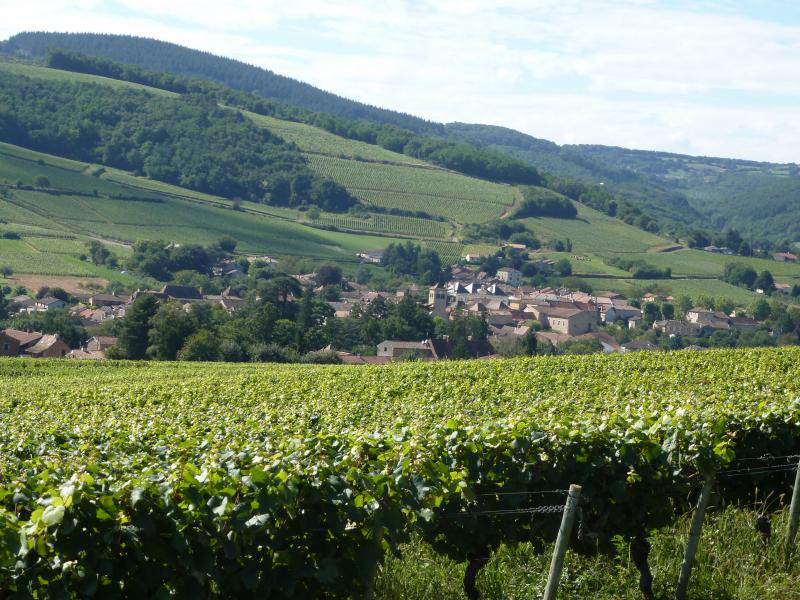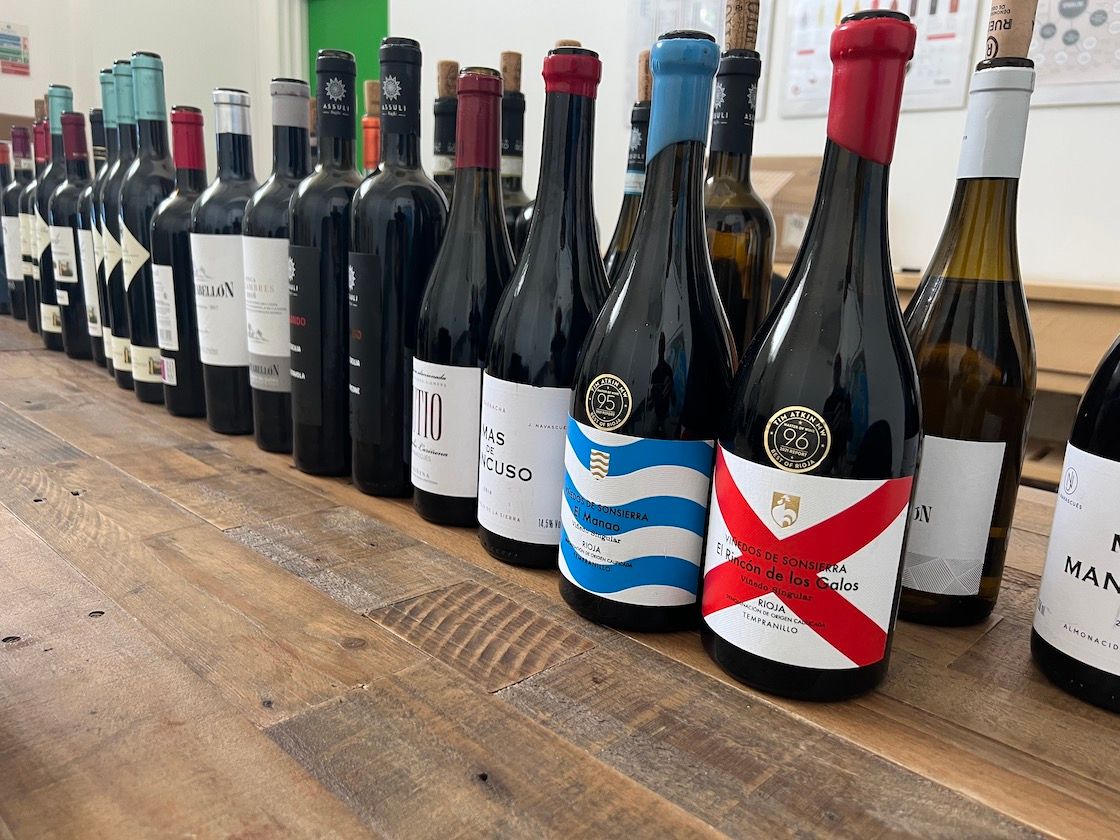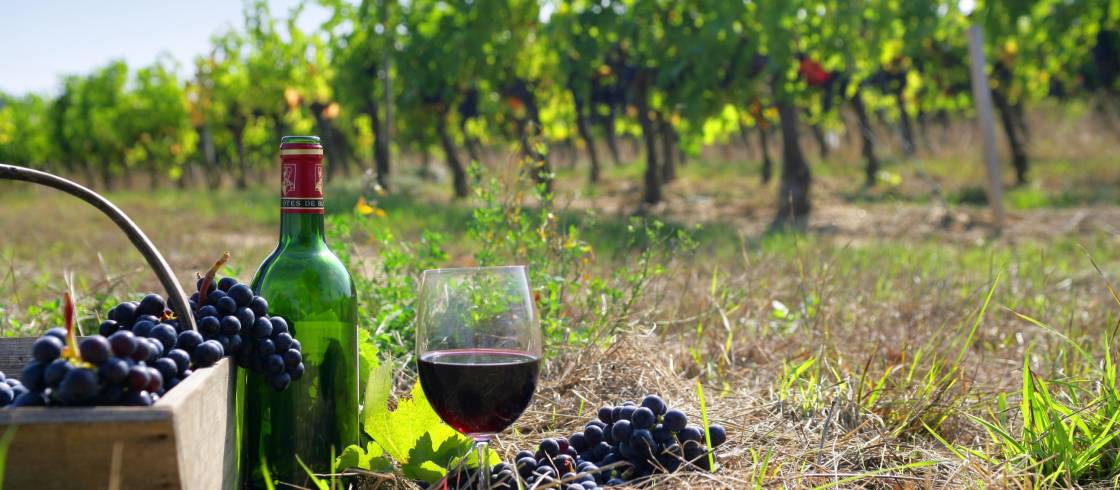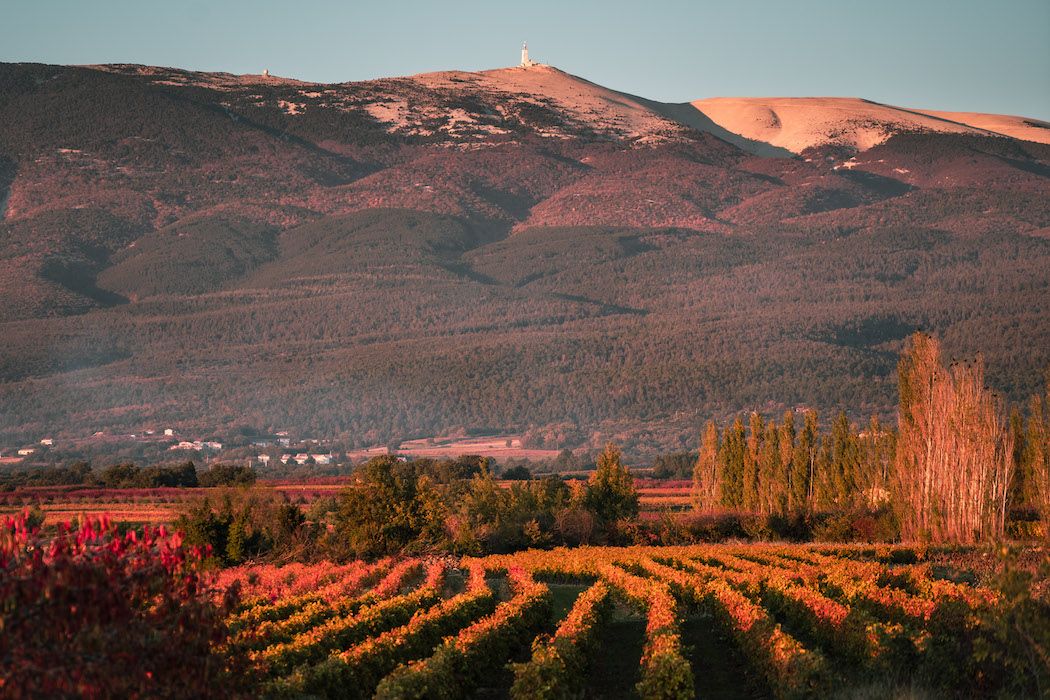You can find out more about the Mâcon-Azé AOC at the Bourgogne Wine Board website here.
Bourgogne is renowned the world over as one of the top winemaking areas and Mâcon-Azé, a denomination that is part of the Régionale Mâcon appellation in the Mâconnais, produces a variety of red, white and rosé wines within a strictly defined area around the village of Azé.
Here the vineyards have an average altitude of between 240m and 440m, and are spread out on either side of the slopes next to the Mâcon-Lugny appellation to the north and Mâcon-Igé to the south. Being so close to La Mouge river helps brings a degree of humidity to the vines.The soil is mainly made up of clay-limestone and the east-facing, sloping vineyards ensure any rainwater drains away, helping to produce concentrated grapes.
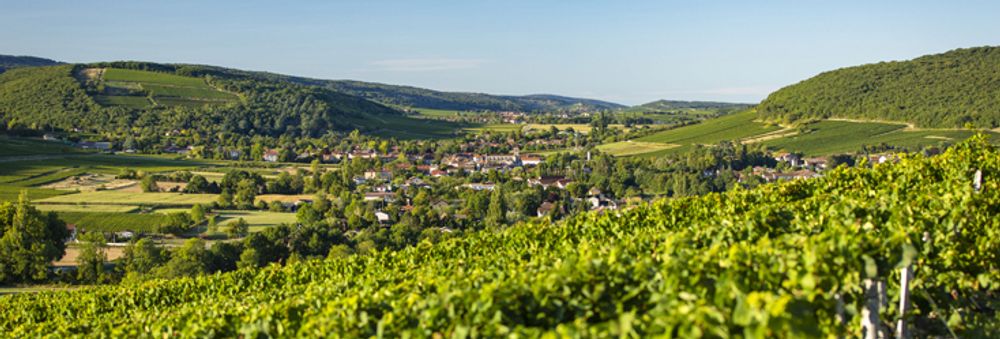
Mâcon-Azé AOC is one of Bourgogne’s Hidden Gems
The Mâcon-Azé is a small appellation, with 74 hectares of vineyard dedicated to the production of white wine grapes, and only 16 hectares earmarked for red and rosé, but nonetheless, it’s one that punches well above its weight in terms of quality, says Pierre-Jérôme Beretti, export manager at local producer, Cave d’Azé.
It’s an appellation which has an ancient history too, with the caves of La Balme showing human life dating back to the Paleolithic era, some 300,000 years ago.
It’s thought the good supply of water has made the area such a coveted place to settle, which can be seen in the number of Roman and aristocratic estates around Azé. Average annual rainfall is now around 850mm and the vines are blessed with moderate temperatures.
Its vineyards, which are comprised of pebbly shallow carbonate soil, are perfect for Gamay and Chardonnay production, and clay loam soil on the other side of the slopes facing west border the better known Mâcon-Lugny appellation to the north, and Mâcon-Igé to the south.
The AOC’s whites possess a golden yellow colour, an intense nose marked by peach, apricot and quince flavours combined with hints of white blossom like acacia. Fresh in the mouth they enjoy a long finish and are “fairly representative of these lovely Mâconnais wines that are both charming, indulgent, and forthright,” says the Bourgogne Wine Board.
These white wines make the perfect match for all kinds of goat cheese, such as the traditional AOC Mâconnais or its neighbouring Charolais for a terroir-themed aperitif. The white wines also coax out the best flavours of the local freshwater fish dishes such as carp with white wine.
The reds, meanwhile, are often oak-aged and have a deep ruby colour, reflecting the concentration of berries, particularly those wines produced during hotter vintages. Hints of blueberry and blackberry are apparent on the nose, with touches of jam which complement more robust meat dishes such as duck ravioli or cote de Boeuf perfectly.
Huge potential
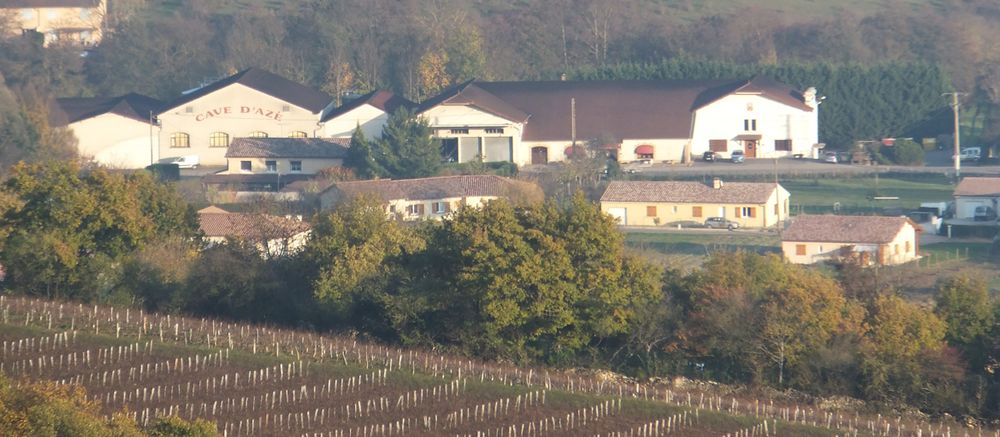
Cave d’Azé believes it has the climate, the altitude, the soil and terroir to make premium Bourgogne wines
Beretti says the Mâcon-Azé has huge potential in that it has the climate, the conditions, the altitude, soils, river, water and and vines to make consistent quality wines every year. It is what helping Cave d’Azé and other producers make the most of soaring costs elsewhere, particularly in Chablis, to help drive exports to both existing and new markets.
Cave d’Azé currently ships over a third (35%) of its production overseas, with sales increasing by 10% year-on-year. The UK is the leading foreign market for Cave Azé’s wines, importing 230,000 bottles last year, up from 175,000 in 2020 and 41,000 the year before that.
“We think that importers are looking for new opportunities and alternatives from Bourgogne with fair prices and consistency in terms of quality. We are pleased to see that our wines from the Mâcon-Azé reflect the balanced style of Chardonnay that UK consumers expect from Bourgogne.”
Increased interest in the Mâcon-Azé AOC has also helped increase sales and attention to the area. For example, he attributes Cave d’Azé’s increased sales in the Danish market to some positive press coverage by a well-known local writer, helping more Danish consumers to discover the region. “The wines met their demand in terms of quality, with fresh and easy drinking wines,”he says, which is what the Mâcon-Azé AOC is all about.
Quietly confident
But producers in the appellation have not had an easy time of it in recent years, something to which Cave d’Azé can readily attest. As if losing nearly three quarters of their 2021 Chardonnay vintage to frost wasn’t bad enough, the Mâconnais winery is now having to deal with the aftermath of another cold spell which hit the region in mid-April, with temperatures plunging to minus seven degrees.
Beretti, though, is quietly confident that this year’s vintage as only certain areas of the vineyards were affected.
“Last year was a challenging one, though fortunately we didn’t lose as much of the Gamay and Pinot Noir as we did Chardonnay, as the red grapes take longer to wake up. When the frosts hit, Chardonnay was flowering and more vulnerable to the cold,” he said.
Without the budget to invest in expensive anti-frost strategies, Beretti says the winery relies on traditional methods of protecting the vines from the worst of the frosts, including careful pruning and the burning of bales of straw and wood to warm up the vines.
“The price we sell our wines at – between €7-€12 in the winery – means we can’t justify the investment for more high-tech solutions,” he adds. “We don’t have the kind of money that Chablis has. So judicious pruning at the right time is crucial. By pruning the vines later, means that they bloom later, thereby hopefully minimising the impact of any frost should it strike.”
The new normal

Cave d’Azé has seen the weather and climate conditions change considerably over recent decades to make adverse weather patterns the new normal
As the effect of global warming and climate change have become increasingly apparent, these weather patterns are becoming less of an extreme event and part of the new normal.
“We often get good weather at the end of March and beginning of April, which stimulates the vines and encourages growth, and then are hit by a hard frost in the middle of April,” says Beretti. “As these events are becoming more regular, we are now better prepared for them than we used to be.”
However, the impact of climate change in the Mâcon-Azé has not been entirely negative for Cave d’Azé, according to Beretti, who says it has enabled it to achieve better maturity, and the perfect balance between ripeness and freshness.
“Warmer weather has helped produce better ripeness in the grapes and has helped improve the quality of our Chardonnay over the past 10 – 15 years,” he adds.
“However, we have to keep the freshness in the wine, so if climate change continues at its current rate we may face problems in the future. But at the moment the wines have good ripeness and maturity, combined with some freshness.”
One method of ensuring the wines have the necessary levels of freshness, he says, is to harvest before noon, when temperatures are lower, which helps concentrate and preserve the fresh fruit flavours, and stabilise sugar levels. “We are more and more precise with the work in the vineyard and the winery to achieve the perfect maturity of the grapes,” confirmed.
Sustainability drive

The The Mâcon-Azé punches well above its weight for quality says Cave d’Azé’s Pierre-Jérôme Beretti
The winery is taking concerted steps to combat further climate change by offsetting its carbon footprint and improve the sustainability of the business.
“We have reduced the weight of our bottles to reduce greenhouse gases resulting from production and transport, and also reduced the weight of the outer cases and use local recycled paper (FSC recycled fibres). We have reduced the use of sulphites and now use FSC certified natural cork. We have increased the ground vegetation such as grass in the vineyards and have also planted more trees and hedges in and around the vineyards to boost biodiversity and capture carbon dioxide,” says Beretti.
Additionally, the winery has signed up to Vignerons Engagés, a French collective body which promotes a philosophy of sustainability across the entire wine supply chain.
The winery is also benefiting from its decades of experience, enabling it to refine its winemaking techniques and adopt new methods when appropriate. It has invested in pneumatic presses and thermoregulated stainless steel vats, which all help to ensure a consistently good product, alongside the use of more traditional methods such as ageing in oak barrels.
Situated in the heart of the Mâcon-Azé, the winery was founded in 1927 and is part of the Compagnie de Burgondie Co-operative which comprises 800 wine-producing families, 3,000 hectares of vineyards, an annual production of around 17 million bottles, and 53 designations of origin (PDO).
Cave d’ Azé itself produces up to two million bottles of wine a year. Key grapes grown include Chardonnay which is used for the production of Mâcon-Villages, Mâcon-Azé white and Bourgogne Chardonnay; Pinot Noir which goes towards the making of Bourgogne Pinot Noir aged in oak, and Gamay for Mâcon-Azé red.
As to the future, the company is now eyeing up alternative export markets, including the US, China, Japan and South-East Asia, and looking to increase sales to the on-trade, wine shops and online channels. In the vineyard, efforts are very much focused on adapting them to better cope with climate change and improving the sustainability of the business.
But its overall focus is to both live up to the reputation of Mâcon-Azé and help grow its appeal around the world by producing consistent, quality wine.
“This is always our aim,” he says.
- You can find our more about Mâcon-Azé at Bourgogne Wine website here.
- You can find out more about Cave d’Azé at its website here.
